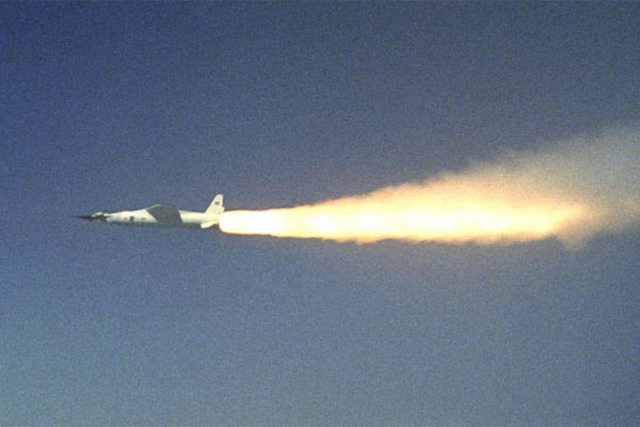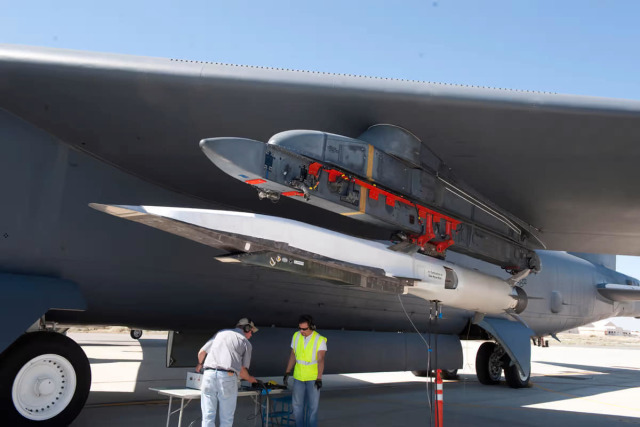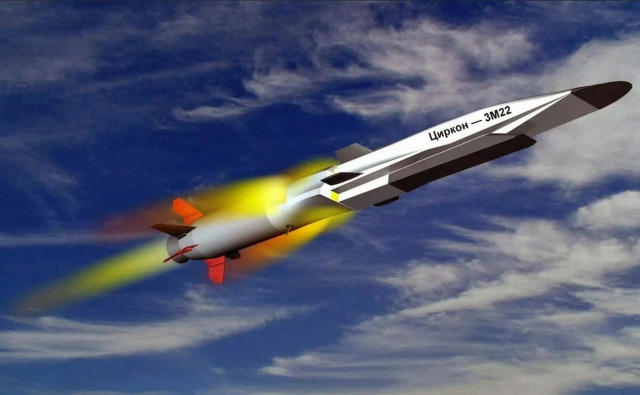This article concludes the topic of power plants for hypersonic flight. The first publication gave a general idea of hypersonic and identified two main types of aircraft suitable for achieving it: hypersonic Glide Vehicles (Hypersonic Glide Vehicles, HGV) and hypersonic cruise missiles (Hypersonic Cruise Missile, HCM). In the second part , it is established that rocket engines or a hypersonic ramjet engine (GPVRD) can be used for their flight. Moreover, a high initial velocity is required to launch a rocket launcher, to achieve which a rocket accelerator can be used as the first stage.
Hypersonic cruise missiles
The required initial acceleration does not require the aircraft to accelerate to the planned cruising speed, but only to the minimum speed sufficient for the operation of the gas turbine engine. After the launch, the GPVRD can accelerate the rocket to the planned cruising speed, and then maintain this speed along the entire route to the target. Hypersonic cruise missiles (GCR) are likely to fly at altitudes from 20 to 30 km, which are partly determined by the need to maintain the appropriate pressure for fuel combustion in the power plant.
When NASA set a new speed record for an air-powered aircraft in March 2004, its X-43A unmanned aircraft flew at a speed of Mach 7 under the action of a hydrogen jet engine. On the second flight, in November of the same year, another X-43A, also powered by hydrogen, reached a speed of Mach 9.64 (10,240 km/h) at an altitude of approximately 33,528 m (110,000 ft).

To disperse the X-43A UAV with a GPVRD during a test flight in March 2004, a PEGASUS solid-fuel rocket accelerator was usedWhen designing a GCR power plant, a hydrocarbon fuel is a more attractive option than hydrogen.
It is not difficult to handle, has a low cost and high volumetric energy density. However, the engine developer is faced with the problem that, given the very high speed of the air flow through the gas turbine engine, it is difficult to meet the time required for evaporation, mixing and combustion of hydrocarbon fuel.
The X-51 Waverider developed by Boeing was designed for air launch from the B-52 at an altitude of about 15,240 m (50,000 ft). A solid-fuel rocket engine similar to that used in the Lockheed Martin MGM-140 Army tactical missile System (ATACMS) was used to increase the speed of the rocket to almost Mach 4.5, which allowed the launch of the Rocketdyne SJY61 hydrocarbon-fueled rocket launcher from Pratt & Whitney. The first three flights turned out to be unsuccessful, but on May 1, 2013, the last instance of a cruise missile flew on a working GPVRD for 210 seconds, reaching a speed of Mach 5.1 (5400 km/h).

X-51 Waverider under the wing of the B-52 Stratofortrest bomberIt is reported that DARPA and the US Air Force in September 2021 successfully conducted flight tests of a technology demonstrator from Raytheon Technologies as part of the HAWC (Hypersonic Air-Breathing Weapon Concept) air-based missile defense program.
After the air launch, the rocket used a solid-fuel accelerator, then successfully launched its hydrocarbon-fueled rocket launcher and demonstrated flight at a speed of Mach 5. The second configuration of the aircraft, developed by Lockheed Martin, completed successful tests in early 2022. He developed a speed of more than 5 Mach on the main engine Aerojet Rocketdyne, reaching heights of more than 19,812 m (65,000 ft) and flying more than 500 km.
At the end of 2021, the US Air Force published a summary of a planned project worth $ 371 million to develop and demonstrate a hypersonic air-based system. Known as Mayhem, it is designed to produce one-time test benches for new engine concepts, such as turbine combined power plants and dual-mode jet engines capable of operating at speeds in subsonic, supersonic and hypersonic modes.
Russian hypersonic flight technologies
According to Western sources, the Russian product 3M22 "Zircon" (SS-N-33) is a hypersonic cruise missile with a GPVRD. A solid-fuel accelerator accelerates it to supersonic speeds, after which a jet engine (reportedly powered by hydrocarbon fuel) accelerates the GCR to a cruising speed of Mach 9. The initial version is intended for use by the Russian Navy. The product has been tested on the Admiral Gorshkov frigate, the Severodvinsk nuclear submarine and the coastal defense ground installation. "Zircon" is designed to attack sea or land targets at a range of up to 1000 km.
According to open sources, in 2022 it was planned to conduct the first flight tests of the Russian GKR air-based "Ostrota", designed to equip Su-34 and Tu-22M3 bombers. The model was developed by GosMKB "Raduga" named after A.Ya. Bereznyak. It uses a new type of power plant "Product 7", designed by the Turaevsky Machine-building Design Bureau "Soyuz". Abroad, Russian media reports on some details of the rocket and its power plant are noted. It is expected that the "Sharpness" will have a mass of less than 1000 kg and a firing range of several hundred kilometers.

Hypersonic missile 3M22 "Zircon"There is also mention of a hypersonic long-range air-launched guided missile under the designation "Gremlin".
The creation of a power plant for it has been entrusted to the already mentioned Turaevsky Machine-building Design Bureau Soyuz. The engine received the designation "Product 70".
Cooperation between Russia and France was noted in the field of hypersonic flight. MBDA Concern, together with the French Aerospace Research Center (ONERA), is working on a planned continuation of the current French air-launched nuclear missile ASMP. It is believed that the promising development will be able to take the form of a weapon capable of moving at hypersonic speed. Within the framework of the project, called LEA, an experimental hypersonic demonstrator was being developed, flight tests of which were planned to be carried out in 2014-15 with Russian assistance. The LEA demonstrator was planned to be launched from the Tu-22M3 bomber, and then accelerated to a speed compatible with the GPVRD using an adapted liquid-fueled power plant from the X-22 Raduga anti-ship air-launched missile (AS-4 KITCHEN). A later plan called for LEA flight tests on the east coast of the United States, but this has not yet happened.
Indian efforts
To accelerate its hypersonic technology demonstrator (HSTDV) to a speed that ensures the operation of the GPRD, the Indian Defense Research and Development Laboratory used the Agni medium-range ballistic missile (AGNI-I) rocket engine as an accelerator. During a test flight conducted on June 12, 2019, a cruise missile with the help of a GPVRD flew at a speed of Mach 6. The launch on September 7, 2020 resulted in 20 seconds of flight using a GPVRD at a speed of almost 2 km/sec.
At sea level, the speed of Mach 5 corresponds to about 5600-6000 km/ h, gradually decreasing by about 5-6% at high altitude. A traditional subsonic cruise missile flies at a speed of about Mach 0.6 – 0.7, so the total flight time from launch to collision with a target at a range of about 1200 km is about an hour. A hypersonic missile flying at a speed of Mach 5 can cover this distance in about 10 minutes. But regardless of whether the hypersonic threat is based on HGV or HCM technology, the combination of high speed, high altitude, maneuverability and minimal warning time will put pressure on even the best modern air defense systems.
Based on the materials of the resource euro-sd.com
